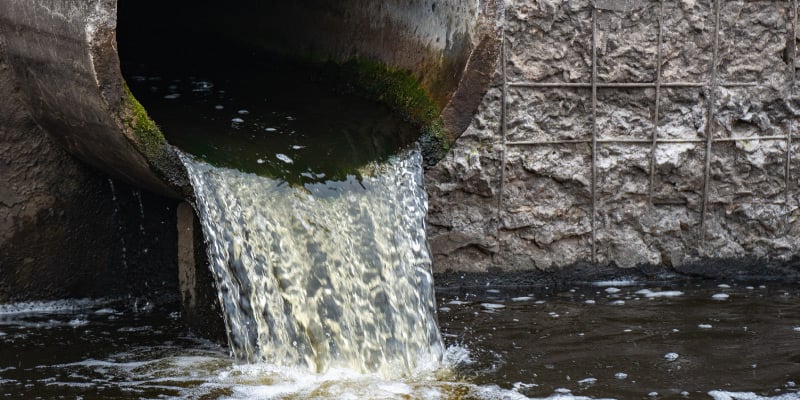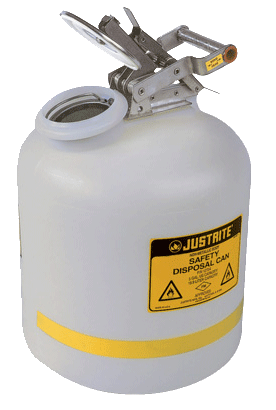Just How Fluid Garbage Disposal Works: A Comprehensive Introduction of Strategies and Technologies Used

Overview of Liquid Waste Types
The complexity of liquid waste types requires an extensive understanding of their features and effects for disposal. Fluid waste can broadly be categorized right into a number of types, including industrial, municipal, agricultural, and harmful waste. Each classification displays unique properties, needing details monitoring approaches to alleviate ecological and wellness risks.
Industrial fluid waste originates from producing processes and typically consists of a variety of contaminants, such as hefty steels, solvents, and natural substances. Metropolitan fluid waste, mostly consisting of wastewater from houses and commercial facilities, has raw material, nutrients, and pathogens (industrial wastewater treatment). Agricultural liquid waste, consisting of drainage from ranches, may include fertilizers, pesticides, and animal waste, posing threats to water top quality and communities
Harmful liquid waste is identified by its toxicity, reactivity, or prospective to trigger harm. This category includes compounds like acids, bases, and particular chemicals that demand stringent handling and disposal procedures. Recognizing these varied liquid waste types is essential for establishing reliable disposal methods and guaranteeing compliance with environmental guidelines. Correct category and characterization are crucial for carrying out ideal treatment strategies and reducing the unfavorable effects on public wellness and the environment.
Physical Therapy Methods

Testing is the initial action, where larger particles and debris are eliminated from the fluid waste making use of screens or grates. This process protects downstream equipment from damages and makes certain smoother procedure. Complying with testing, sedimentation makes use of gravitational pressure to different solids from liquids. In sedimentation containers, larger particles settle near the bottom, forming a sludge layer, while the cleared up liquid can be more treated.
Filtering is another important technique that entails passing the fluid with permeable materials, such as sand or membranes, to record smaller bits. This step enhances the quality of the fluid, making it appropriate for succeeding therapy procedures.

Chemical Treatment Strategies
Chemical treatment strategies are essential for properly taking care of liquid waste, especially in dealing with liquified and colloidal impurities that physical approaches might not effectively get rid of. These methods make use of various chemical representatives to reduce the effects of, speed up, or transform unsafe materials into less dangerous types.
One common approach is coagulation and flocculation, where chemicals such as alum or ferric chloride are included to promote the gathering of suspended particles. This procedure boosts sedimentation, permitting much easier removal of the resulting sludge. In addition, oxidation processes, using representatives like chlorine or ozone, are used to damage down complex Visit Website natural substances and virus, providing the waste much safer for discharge or more therapy.
Neutralization is an additional vital technique, which adjusts the pH of acidic or alkaline waste streams to neutral levels, protecting against possible harm to downstream systems and the setting. Furthermore, progressed oxidation procedures (AOPs) make use of combinations of oxidants and ultraviolet light to deteriorate persistent toxins, attaining a higher level of therapy efficiency.
Organic Therapy Processes
Organic treatment processes play an important function in the management of fluid waste by making use of microorganisms to disintegrate raw material and lower impurity levels. These processes can be broadly classified right into anaerobic and cardiovascular treatments, each employing certain microbial neighborhoods to accomplish reliable waste degradation.
Cardio treatment includes using oxygen to assist in the malfunction of organic materials by bacteria. This procedure is typically implemented in triggered sludge systems, where oygenation storage tanks offer a favorable atmosphere for microbial development, leading to the oxidation of natural pollutants. The resultant biomass can be separated from treated effluent via sedimentation.
In comparison, anaerobic go to my blog therapy takes place in the lack of oxygen, depending on various bacteria to break down natural issue. This technique is specifically useful for high-strength waste, as it produces biogas, a renewable resource resource, while lowering sludge production. Technologies such as anaerobic digesters are frequently employed in commercial and metropolitan applications.
Both cardio and anaerobic organic treatments not only minimize the ecological effect of fluid waste yet additionally assist in source recuperation, making them vital elements of sustainable waste monitoring approaches. Their performance, versatility, and efficiency support their widespread application across different sectors.
Emerging Technologies in Disposal
Cutting-edge methods to fluid waste disposal are rapidly advancing, driven by developments in innovation and an increasing emphasis on sustainability. Among these emerging modern technologies, membrane bioreactors (MBRs) have actually obtained traction for their capability to combine biological treatment with membrane layer purification, resulting in high-quality effluent that can be recycled in various applications. MBRs allow smaller impacts and much more effective procedures contrasted to standard systems.
Another promising advancement is using anaerobic digestion combined with nutrient healing technologies, which not just deals with fluid waste but also produces biogas and recuperates important nutrients like nitrogen and phosphorus. This twin advantage boosts source effectiveness and lowers ecological influence.
Additionally, advanced oxidation procedures (AOPs) are being taken on for the degradation of intricate natural pollutants. These techniques make use of powerful oxidants and catalysts to damage down pollutants at the molecular level, offering an extremely efficient remedy for tough waste streams.
Additionally, the assimilation of expert their website system and device learning in waste management systems is optimizing functional efficiency and predictive upkeep, leading to lowered prices and boosted ecological conformity. These innovations reflect a considerable shift towards more lasting and efficient fluid waste disposal techniques.
Conclusion
In final thought, effective fluid waste disposal demands a detailed understanding of different techniques and innovations. The combination of physical, chemical, and biological treatment methods ensures the effective administration of varied waste types. Additionally, the development of innovative modern technologies improves treatment efficiency and promotes sustainability in waste management techniques. By continually advancing these approaches, it ends up being feasible to resolve the expanding obstacles connected with fluid waste, ultimately adding to environmental defense and resource healing.
Fluid waste disposal is a vital facet of environmental administration, calling for a detailed understanding of various strategies and innovations customized to various waste types. Liquid waste can extensively be classified right into a number of types, including industrial, municipal, farming, and hazardous waste. Agricultural liquid waste, consisting of drainage from farms, might include plant foods, pesticides, and pet waste, positioning risks to water quality and environments.
Different physical therapy approaches play a vital function in managing fluid waste successfully - industrial wastewater treatment.In conclusion, reliable fluid waste disposal requires a thorough understanding of numerous techniques and technologies